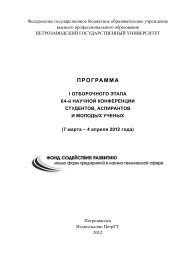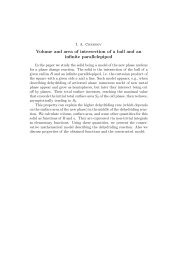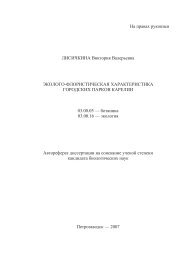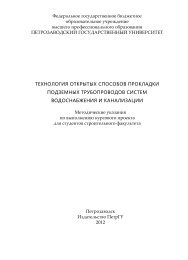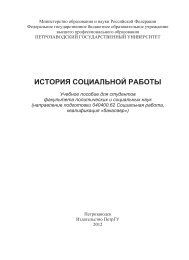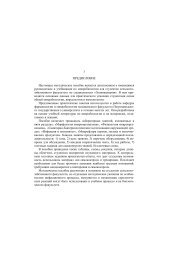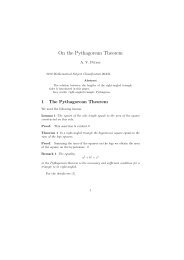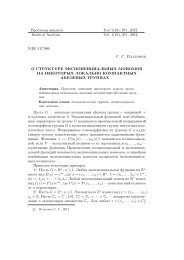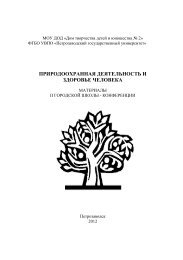Ñ 1. Introduction - Issues of Analysis
Ñ 1. Introduction - Issues of Analysis
Ñ 1. Introduction - Issues of Analysis
Create successful ePaper yourself
Turn your PDF publications into a flip-book with our unique Google optimized e-Paper software.
24 A. Prusinska, A. Tret'yakovNote, that when Λ is one-to-one, ‖Λ −1 ‖ can be considered as the usualnorm <strong>of</strong> the element Λ −1 in the space L(Y, X).In our further considerations, under notion Λ −1 we shall mean justright inverse operator (multivalued) with the norm dened by (2). Moreover,unless otherwise stated we will assume that X and Y are Banachspaces.Ÿ 2. Elements <strong>of</strong> p-regularity theoryLet U be a neighborhood <strong>of</strong> a point x ∗ ∈ X. If F : U → Y is p-timesdierentiable mapping in U andF (i) (x ∗ ) = 0, for all i = 1, . . . , p − 1,then we say that F is completely degenerate at x ∗ up to order p.A mapping F is called regular at some point x ∗ ifImF ′ (x ∗ ) = Y. (3)The mapping F is called nonregular (irregular, degenerate) if regularitycondition is not satised.In this paper we consider the case when the regularity condition (3)does not hold, but the mapping F is p-regular. First <strong>of</strong> all, let us remindthe denition <strong>of</strong> p-regularity and construction <strong>of</strong> p-factor-operator.Definition <strong>1.</strong> Let F : U → Y, U ⊆ X, and F ∈ C p (U). Then forany x ∈ U and for any element h ∈ X, h ≠ 0 we can associate a linearoperator F (p) (x)[h] p−1 ∈ L(X, Y ), dened by the formula:The linear operatorF (p) (x)[h] p−1 ξ = F (p) (x)[h] p−1 [ξ], for any ξ ∈ X.Ψ p (x, h) = F (p) (x)[h] p−1 ∈ L(X, Y )is called the p-factor operator.A generalization <strong>of</strong> the regularity condition is given by the followingcondition <strong>of</strong> p-regularity:



